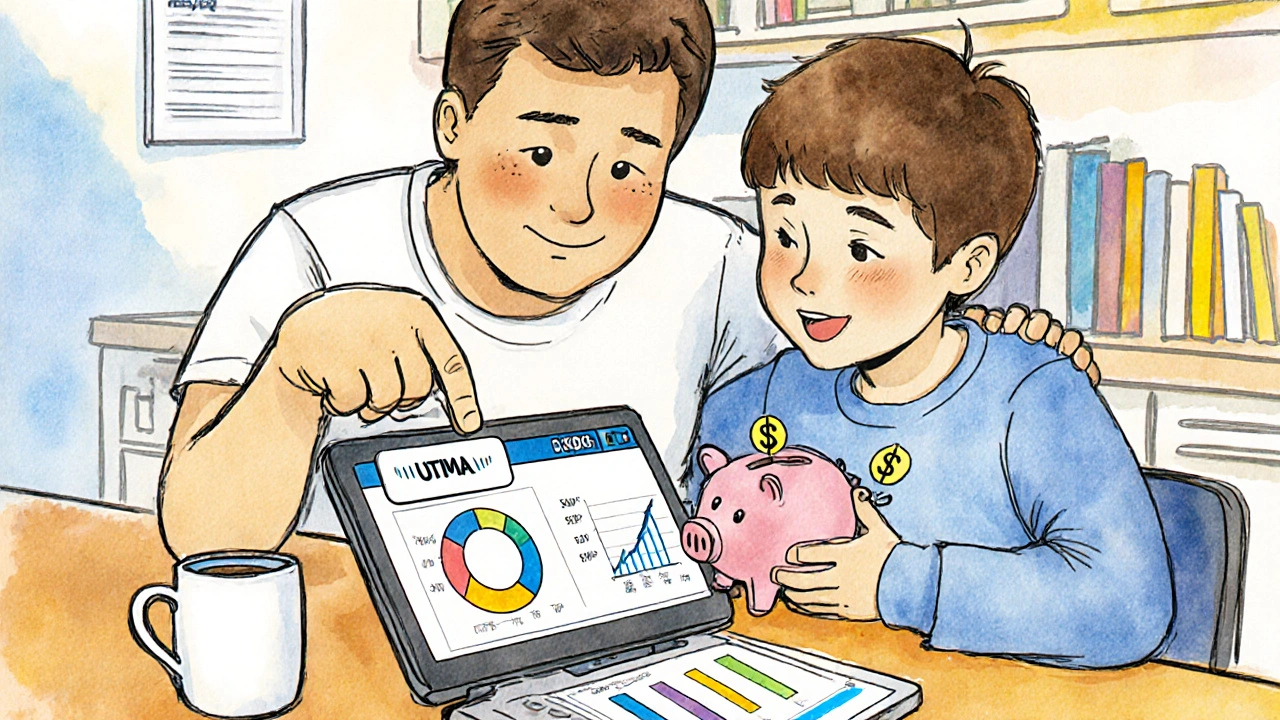Custodial Accounts: What They Are and How They Help Kids Build Wealth
When you open a custodial account, a legal account where an adult manages money for a minor until they reach adulthood. Also known as UGMA or UTMA accounts, it lets you invest in stocks, ETFs, or even crypto on behalf of a child—without setting up a trust or complicated legal structure. These aren’t just savings jars with birthday cash. They’re real investment vehicles that can grow tax-efficiently and teach kids about money before they even get their first paycheck.
There are two main types: UGMA, Uniform Gifts to Minors Act accounts and UTMA, Uniform Transfers to Minors Act accounts. UGMA lets you hold cash, stocks, bonds, and mutual funds. UTMA goes further—it lets you invest in real estate, art, patents, or even private equity. Both work the same way: you control the money until the child turns 18 or 21 (depending on state law), then it’s theirs—no questions asked. No one can take it back. No strings attached. That’s why so many parents use them to fund college, a first car, or just give their kid a financial head start.
Here’s the catch: the money grows tax-free up to a point. The first $1,250 in unearned income (like dividends or capital gains) is tax-free. The next $1,250 is taxed at the child’s rate—usually 0%. Anything over $2,500 gets taxed at the parent’s higher rate. That’s why smart investors use these accounts for long-term holdings like index funds. Buy and hold. Let compounding work. Don’t trade in and out. The goal isn’t to game the tax system—it’s to build something that lasts.
Many people think custodial accounts are only for rich families. They’re not. You can open one with $50. Some brokers even let you automate monthly contributions from your paycheck. Think of it like a 401(k) for your kid. You don’t need to pick stocks. You don’t need to time the market. Just pick a low-cost ETF, set up auto-invest, and forget it. By the time they turn 18, they could have $10,000—or $100,000—depending on how early you start and how much you put in.
And yes, there are risks. Once they turn 18, they can spend it on anything. A new phone. A trip. A fancy car. That’s why some parents use these accounts to teach financial responsibility—not just wealth. Talk to them about what’s in the account. Show them statements. Let them see how money grows over time. That’s the real value of a custodial account: it turns abstract concepts like compound interest into something real.
The posts below cover everything from how to open one with Fidelity or Charles Schwab, to the tax traps most people miss, to how to use them alongside 529 plans without doubling up on fees. You’ll find real examples from parents who started with $25 a month and ended up with six figures. You’ll see how to avoid the biggest mistake—waiting until the kid is 16 to start. And you’ll learn why some families use UTMA accounts to buy rental property for their teens. This isn’t theory. It’s what’s working right now for real people.
Robo-Advisors for Teens and Custodial Accounts: What You Need to Know in 2025
Learn how to open and manage a robo-advisor custodial account for teens in 2025. Understand the rules, top platforms, SEC requirements, and what happens when your child turns 18.
View More